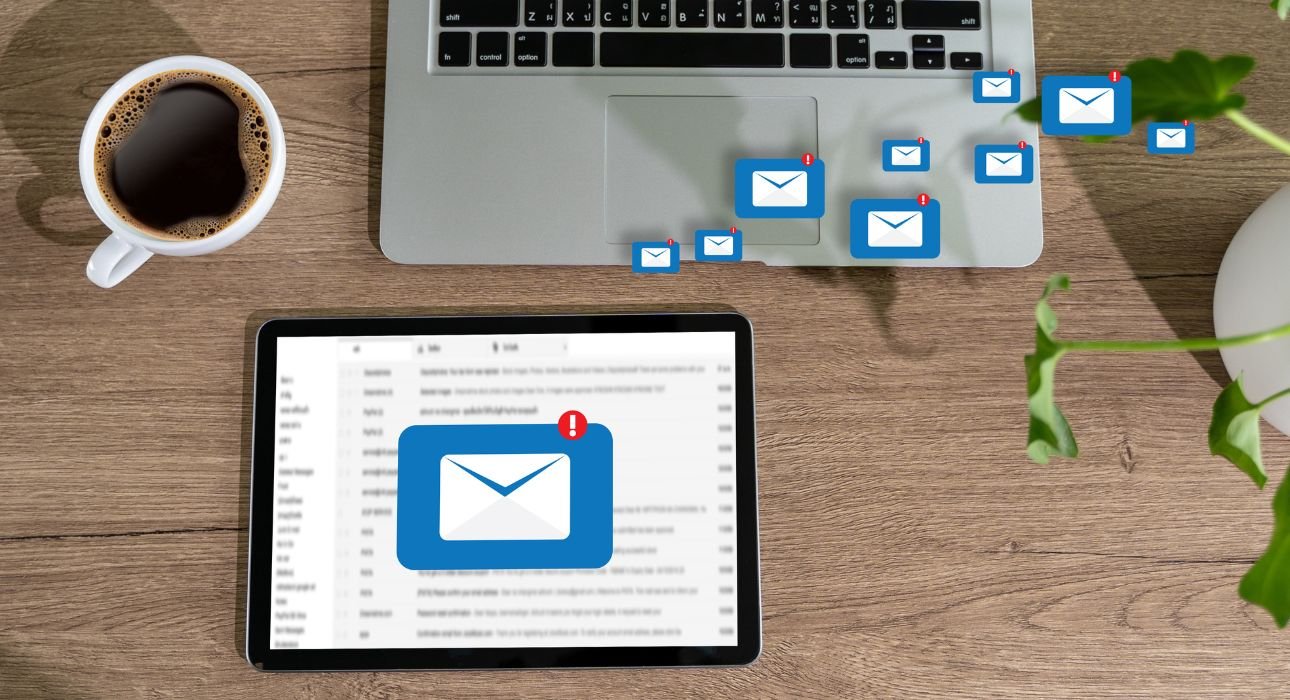In today’s technology-driven world, almost everyone relies on digital communication, whether through social media or emails, rather than traditional postal methods. Over time, these advancements have made communication faster, more accessible, and easier to use for everyone.
Emails have become the cornerstone of professional communication. Yet some agencies or the government workforce utilise the letter and post method. Emails in the present era have become a ubiquitous form of communication infiltrating life in every aspect whether it’s professionally or personally or for advertisements. Many argue that email is a spent force, but have you ever considered the fascinating transition from letters to fax to email? While these advancements are fundamental to progress, we often overlook the emotional impact of email communication.
Every word carries an emotion, shaping how a message is perceived. Work emails are essential, and visuals can play a crucial role in conveying information clearly and effectively. They can significantly affect productivity, relationships and emotions within the office environment. Let’s dive deeper into and explore the relevant psychology behind the work emails and How they affect the sender as well as the reader. It has a huge impact on the type of assessment one can develop towards the writer. Understanding the basic psychology behind work emails will efficiently help us to transform the quality of emails and pursue more productive results. It takes a part in maintaining the mental well-being of an individual too in this fast-paced digitally inclined world.
Transition towards Work Emails
From the traditional method of postal mail to fast and instantaneous emails, communication has evolved a lot through the decades. The rise in the importance of time as well as need, emails have become a more acceptable form of communication as compared to slow and time-consuming post mails. Unlike emails, postal mail is tedious and can take several days to be delivered. On the other hand, emails that are sent within milliseconds are more equipped plus help to connect with people settled down anywhere in the globe. This shift in interpersonal dynamics inevitably influenced the way we use emails, some use it for turning to instant messaging platforms whereas others just compose a long lengthy body.
As time passed by emails started upgrading. They started incepting files such as photos, documents, and voice notes in them making their transfer more easier. As things started getting more comfortable emails were adopted as a versatile tool for communication. Not only this, we can integrate other data in the emails and work according to the schedule. This streamlined productivity and organisation, enables the user to manage things in various aspects more efficiently from a single interference only.
Psychology behind the Transcribed Body
As it is wholly a constructive textual body it lacks a particular voice. The role of tone in email is one of the most intriguing aspects and affects the psychology of the individual on either side of the screen with the same amount of stress. Unlike face-to-face conversations where one can easily interpret in what is the motive of front person. Tone along with the facial expressions makes things easier. The absence of vocal inflexions and body language can lead to misinterpretations. What might seem to neutral or positive email to the sender can be misinterpreted by the recipient as cold, harsh or even passive-aggressive. Research has shown people are highly sensitive towards critical emails. Thus managing tone is crucial along with respectful language. In today’s digital-first work environment, there’s an alarming pressure to respond towards emails promptly. The expectations of fast replies to emails contribute to affecting the psychological well-being of an individual.
Constantly checking the inboxes, responding to the necessary emails and managing the data as well as the storage of the email can take a lot of toll on our mental health. The constant buzzing and pinging of phone flooded with new emails increases stress and urgency to respond, resulting in anxiety and decreased productivity. The interconnection of email usage and lifestyle balance has blurred the boundaries between work and personal life. The intensity by which our colleagues expect us to send emails at whatever point in our lives and at whatever time is insane.
This contact hindrance affects the mental well-being of the individual and overall quality of life. If we consider this, according to a study by the University of California, an average office worker utilises 28% of their workday on email. the constant drive to check new emails, take in new information and try to focus on other tasks reduces the overall productivity of an individual. This ultimately leads to reduced focus as well as task completion Due to this, cognitive load is amplified when the emails are poorly structured and contain too much irrelevant information.
Power of Email Etiquette and Professionalism
After all, going through all of these, one should learn to adapt to email etiquette and maintain professionalism in the workplace. A well-written email reflects positivity as well as establishes a sense of professionalism which is imperative for formulating trust among the employee regarding their work and skills. A well-written email reflects a positive attitude and a monotonous tone. On the other hand poorly transcribed and formulated emails can harm a professional reputation.
Striking the right balance between formal and informal language depends on the workplace culture and the recipient’s preferences. Some individuals may foster a more relaxed and cultured email, while others may require strict professionalism. It’s important to construct a good format and nicely laid out for more professionally looking mail.
Understanding the emotional dynamics of Work Electronic mails
In a world flooded with information, brevity is key to crafting clear and concise emails. Well-structured emails not only show consideration but also enhance communication, making collaboration more efficient in professional settings. Understanding the psychological aspects of email—such as tone interpretation, cognitive load, and the impact of silence—can help improve clarity and foster a healthier, more effective work environment.
By being mindful of these psychological factors, employees as well as managers can manage and ensure effective communication along with emotional intelligence. Fostering an email culture of respect, clarity and promptness in email communication will only enhance productivity and focus.
References +
- The Psychology of Emails: Understanding the impact of communication via email. (n.d.). https://inframail.io/blog-detail/the-psychology-of-emails-understanding-the-impact-of-communication-via-email
- results@sales-consultancy.com & results@sales-consultancy.com. (2013, August 14). The psychology of your emails. NASP. https://www.nasp.com/blog/the-psychology-of-your-emails/













Leave feedback about this